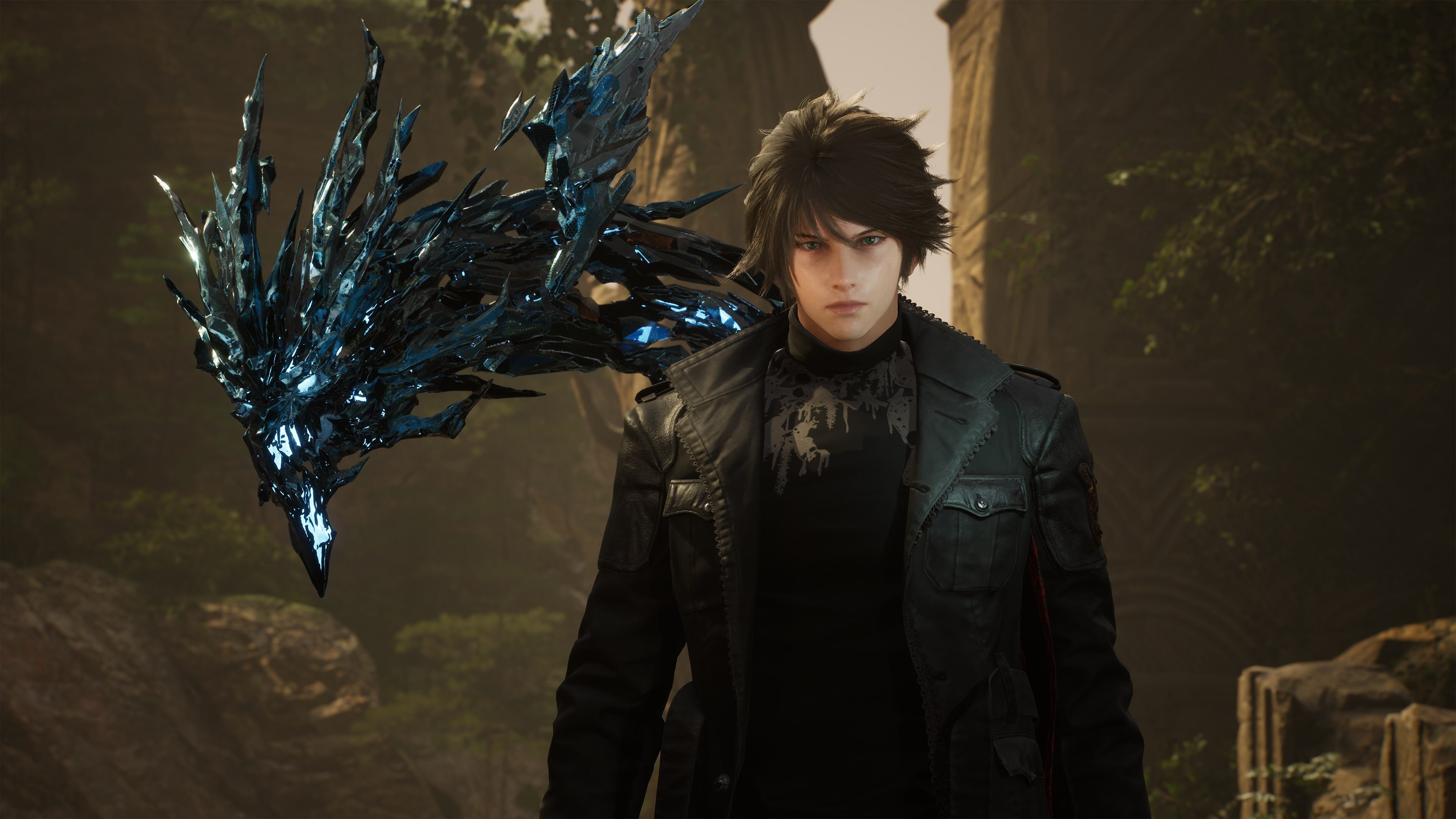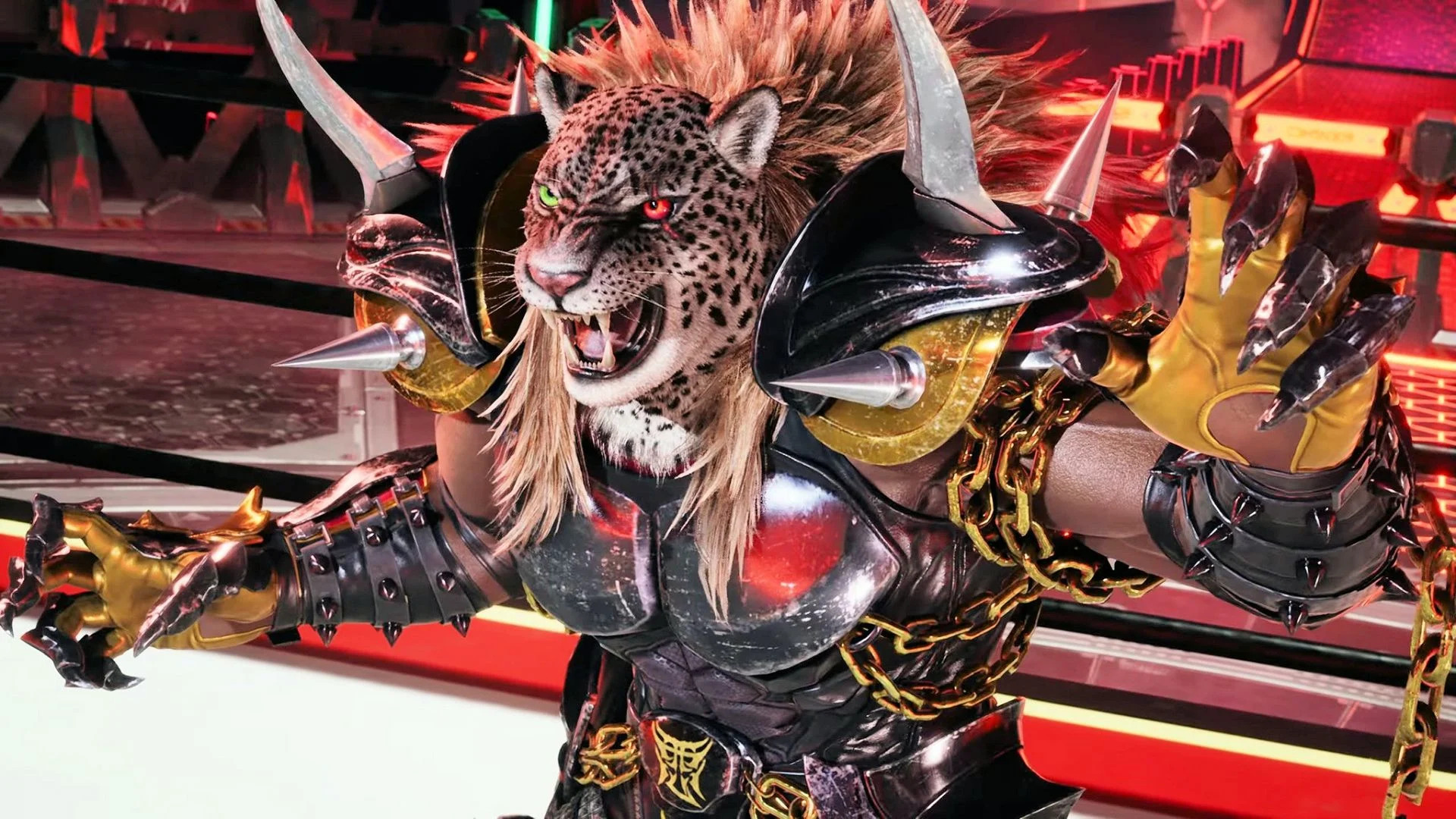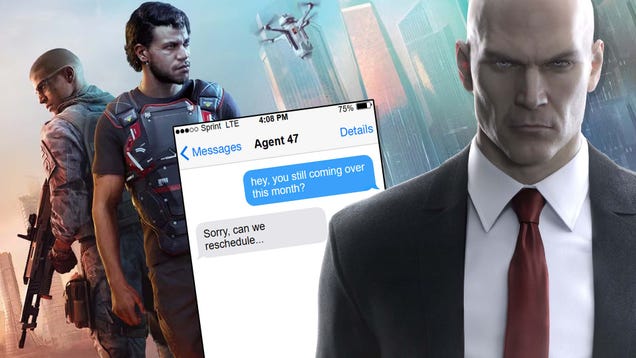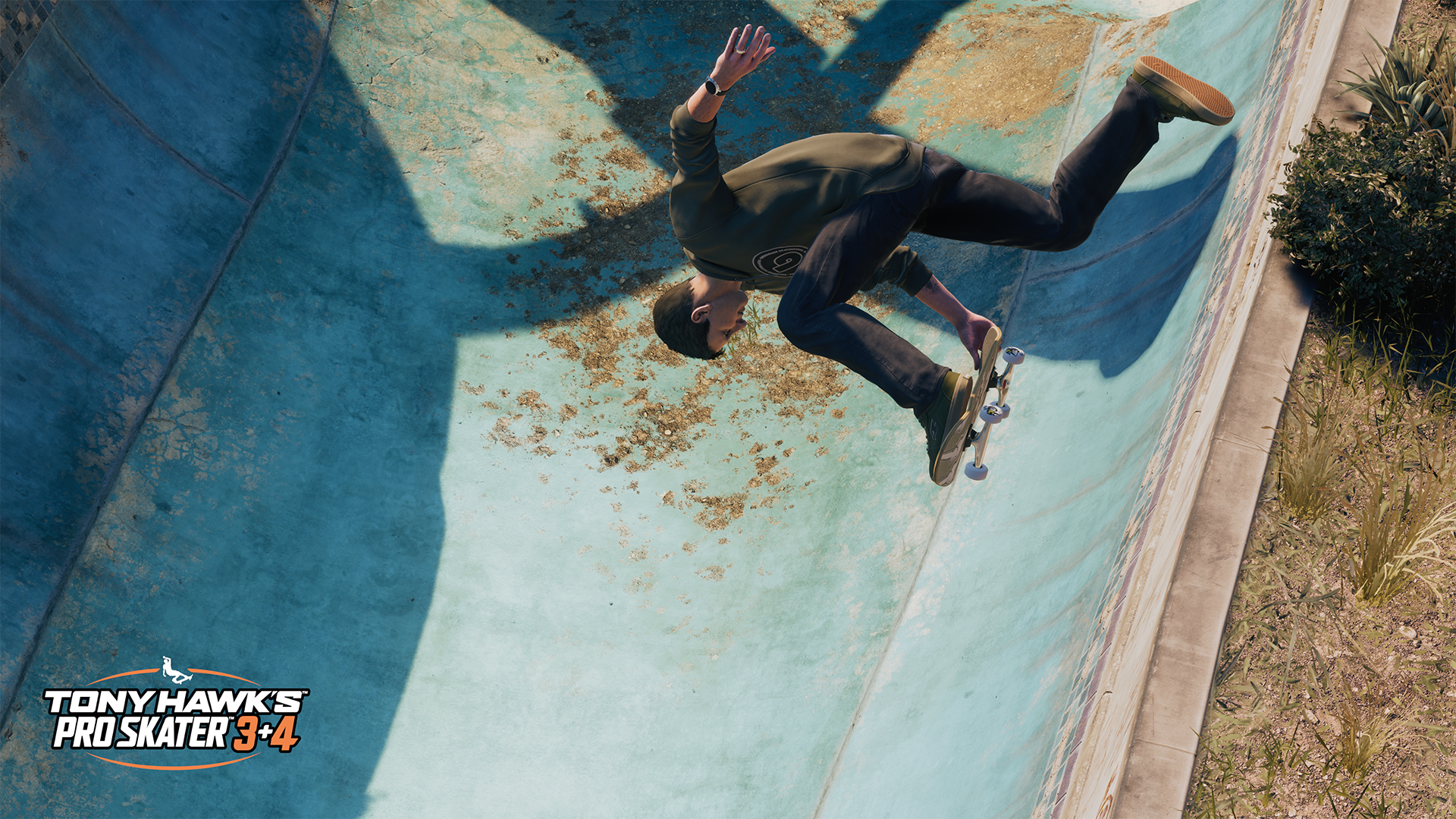Tony Hawk’s Pro Skater 3 + 4 — Returning Skaters
The roster of skaters originally featured in Tony Hawk’s™ Pro Skater™ 3 and Tony Hawk’s™ Pro Skater™ 4 helped to further catapult skateboarding culture into the mainstream as big names like Bob Burnquist, Steve Caballero, Elissa Steamer, and Chad Muska joined Tony Hawk in a stacked roster of award-winning pro skaters capable of shredding in and out of the game.
In this feature, following the Demo announcement and the full soundtrack reveal, we’re proud to share the full roster of returning skaters in the upcoming Tony Hawk’s™ Pro Skater™ 3 + 4arriving on PlayStation 4 and 5, Xbox Series X|S, Xbox One, Nintendo Switch, Nintendo Switch 2, and PC.
Tony Hawk’s Pro Skater 3 + 4 launches on July 11.
THPS 3 + 4: Returning Skaters
From gold medalists to progenitors of some of today’s most iconic skateboarding tricks, these classic skaters were instrumental in bringing skateboarding culture to a wider audience. Mixing courage, creativity, and an iron will, they’re more than ready to tackle any obstacle put before them.
“Being in the original games was epic!” shares Elissa Steamer, who was the first playable female skater in the original Tony Hawk’s Pro Skater game. “It was semi-life changing. I can’t say enough about how stoked I was – and am now! – to be in the games.”
“From the moment Tony asked, it was an honor, yet I had no idea of what it would come to mean,” says Rodney Mullen, originator of the kickflip and largely considered one of the most influential skaters in the sport. “The first time I showed up on tour after the release of the game, I recall ‘em shop owners having to put me on top of the tour van roof to manage so that I could sign things in all the madness. The crowd was rocking the van back and forth!blew my mind, the impact it had.”
“The game attracted such a broader group of skaters, which has elevated our community in layered ways: from tricks to societal acceptance to the respect we get from people who often thought otherwise, like parents discouraging their kids who were simply outsiders looking for a place to belong,” Mullen continues. “Skating is integrated with a culture, a way of being, more than pretty much any other sport I can think of. The way Tony’s game shows that via the music, art, and vibe batted this home. It’s cool to be understood.”
When Tony Hawk’s Pro Skater 3 + 4 launches this July, here are the returning skaters ready to hit the pavement once again, including skaters featured in the original Tony Hawk’s Pro Skater 3 and Tony Hawk’s Pro Skater 4 games plus other titles in the series.
Tony Hawk
San Diego, California
Style: Vert / Stance: Goofy
Tony Hawk made history by landing the first ever 900 at the 1999 X Games, skyrocketing the sport into the mainstream. Today he remains the sport’s most iconic figure.
Bob Burnquist
Rio de Janeiro, Brazil
Style: Vert / Stance: Regular
Bob Burnquist shocked the skateboarding world when he landed the first Fakie 900. His iconic “Dreamland” skatepark is home to a permanent Mega Ramp.
Bucky Lasek
Baltimore, Maryland
Style: Vert / Stance: Regular
Known for his vert skills, Bucky has won 10 gold medals at the X Games and is one of only two vert skateboarders to have won three gold medals consecutively.
Steve Caballero
San Jose, California
Style: Vert / Stance: Goofy
An iconic skateboarder responsible for inventing various vert tricks. He holds the record for the highest air ever achieved on a halfpipe.
Kareem Campbell
Harlem, New York
Style: Street / Stance: Regular
Called the godfather of smooth street style, Kareem left his mark by popularizing the skateboard trick, “The Ghetto Bird,” and founded City Stars Skateboards.
Geoff Rowley
Liverpool, England
Style: Street / Stance: Regular
Geoff Joseph Rowley Jr. is an English skateboarder and owner of Civilware Service Corporation. In 2000 he was crowned “Skater of the Year” by Thrasher Magazine.
Andrew Reynolds
North Hollywood, California
Style: Street / Stance: Regular
Co-founder and owner of Baker Skateboards, Andrew Reynolds turned pro in 1995 and won Thrasher Magazine’s “Skater of the Year” award just three years later.
Elissa Steamer
San Francisco, California
Style: Street / Stance: Regular
Elissa is a four-time X Games gold medalist, the first female skateboarder to go pro, and the first woman ever inducted into the Skateboarding Hall of Fame.
Chad Muska
Los Angeles, California
Style: Street / Stance: Regular
Artist, musician, and entrepreneur. Described by the Transworld Skateboarding editor-in-chief as “one of the most marketable pros skateboarding has ever seen.”
Eric Koston
Los Angeles, California
Style: Street / Stance: Goofy
Co-founder of Fourstar Clothing and the skate brand The Berrics, Eric is a master of street skateboarding and a two-time X Games gold medalist.
Rodney Mullen
Gainesville, Florida
Style: Freestyle / Stance: Regular
One of the most influential skateboarders of all time, Rodney Mullen is the progenitor of the Flatground Ollie, Kickflip, Heelflip, and dozens of other iconic tricks.
Jamie Thomas
Dothan, Alabama
Style: Street / Stance: Regular
Nicknamed “The Chief,” Jamie is the owner and founder of Zero Skateboards. He helped film 1996’s “Welcome to Hell,” one of the most iconic skate videos ever made.
Rune Glifberg
Copenhagen, Denmark
Style: Vert / Stance: Regular
Nicknamed “The Danish Destroyer,” Rune Glifberg is one of three skaters to have competed at every X Games, amassing over 12 medals at the competition.
Aori Nishimura
Tokyo, Japan
Style: Street / Stance: Regular
Born in Edogawa, Tokyo in Japan, Aori Nishimura started skateboarding at the age of 7 and went on to become the first athlete from Japan to win gold at the X Games.
Leo Baker
Brooklyn, New York
Style: Street / Stance: Goofy
Leo is the first non-binary and transgender professional skateboarder in the Pro Skater™ series and has won three gold medals, placing in over 32 competitions.
Leticia Bufoni
São Paulo, Brazil
Style: Street / Stance: Goofy
Multiple world record holder and six-time gold medalist. Named the #1 women’s street skateboarder by World Cup of Skateboarding four years in a row.
Lizzie Armanto
Santa Monica, California
Style: Park / Stance: Regular
A member of the Birdhouse skate team, Lizzie has amassed over 30 skateboarding awards and was the first female skater to complete “The Loop,” a 360-degree ramp.
Nyjah Huston
Laguna Beach, California
Style: Street / Stance: Goofy
One of skateboarding’s biggest stars, Nyjah has earned over 12 X Games gold medals, 6 Championship titles, and a bronze medal at the 2024 Summer of Olympics.
Riley Hawk
San Diego, California
Style: Street / Stance: Goofy
Riley Hawk decided to turn pro on his 21st birthday and became Skateboarder Magazine’s 2013 Amateur of the Year later that same day.
Shane O’Neill
Melbourne, Australia
Style: Street / Stance: Goofy
Australian skateboarder who is one of only a few skateboarders to win gold in all four major skateboarding contests, including the X Games and SLS.
Tyshawn Jones
Bronx, New York
Style: Street / Stance: Regular
A New York City native and two-time Thrasher Magazine “Skate of the Year” winner, Tyshawn Jones is the youngest skateboarder to ever achieve that accolade.
The above skaters are far from the only icons you’ll encounter in the game’s large roster. Keep your eyes on the Tony Hawk’s Pro Skater blog found here for more info on Tony Hawk’s Pro Skater 3 + 4 as we approach its July 11 release date, including the full reveal of new skaters joining in on the fun.
Tony Hawk’s Pro Skater 3 + 4 rebuilds the original games from the ground up with classic and new skaters, parks, tricks, tracks, and more. Skate through a robust Career mode taking on challenges across two tours, chase high scores in Single Sessions and Speedruns, or go at your own pace in Free Skate.
Get original with enhanced creation tools, go big in New Game+, and skate with your friends in cross-platform online multiplayer* supporting up to eight skaters at a time. New to the series? Hit up the in-game tutorial led by Tony Hawk himself to kick off your skating journey with tips on Ollies, kick flips, vert tricks, reverts, manuals, special tricks, and more.
Don’t miss the Foundry Demo, available now, featuring playable skaters, two parks, and a selection of songs from the soundtrack. Pre-order Tony Hawk’s Pro Skater 3 + 4 on select platforms* for access to the demo and find more info here.
Purchase the Digital Deluxe Edition and gain Early Access*** to play Tony Hawk’s™ Pro Skater™ 3 + 4 three days before the official July 11 launch date.
Shred the parks and spread fear as the Doom Slayer and Revenant skaters plus get extra music, skate decks, and Create-A-Skater gear:
Doom Slayer: Play as Doom Slayer, featuring a Standard and Retro outfit plus two unique special tricks and the Unmaykr Hoverboard.
Revenant: Get evil with the Revenant, including two unique special tricks.
Additional Music: Headbang to a selection of classic and modern music tracks added to the in-game soundtrack.
Skate Decks: Access additional skate decks including Doom Slayer and Revenant themed designs.
Create-A-Skater Items: Kit out your skater with additional apparel items.
Pre-orders are now available for Tony Hawk’s Pro Skater 3 + 4 on PlayStation 4 and 5, Xbox Series X|S, Xbox One, Nintendo Switch, and PC. For more information, visit tonyhawkthegame.com.
* Activision account and internet required for online multiplayer and other features. Platform gaming subscription may be required for multiplayer and other features.
**Foundry demo available on PlayStation 4 and 5, Xbox Series X|S, Xbox One, and PC. Not available on Nintendo Switch. Foundry Demo availability and launch datesubject to change. Internet connection required.
*** Actual play time subject to possible outages and applicable time zone differences.
#tony #hawks #pro #skater #returningTony Hawk’s Pro Skater 3 + 4 — Returning Skaters
The roster of skaters originally featured in Tony Hawk’s™ Pro Skater™ 3 and Tony Hawk’s™ Pro Skater™ 4 helped to further catapult skateboarding culture into the mainstream as big names like Bob Burnquist, Steve Caballero, Elissa Steamer, and Chad Muska joined Tony Hawk in a stacked roster of award-winning pro skaters capable of shredding in and out of the game.
In this feature, following the Demo announcement and the full soundtrack reveal, we’re proud to share the full roster of returning skaters in the upcoming Tony Hawk’s™ Pro Skater™ 3 + 4arriving on PlayStation 4 and 5, Xbox Series X|S, Xbox One, Nintendo Switch, Nintendo Switch 2, and PC.
Tony Hawk’s Pro Skater 3 + 4 launches on July 11.
THPS 3 + 4: Returning Skaters
From gold medalists to progenitors of some of today’s most iconic skateboarding tricks, these classic skaters were instrumental in bringing skateboarding culture to a wider audience. Mixing courage, creativity, and an iron will, they’re more than ready to tackle any obstacle put before them.
“Being in the original games was epic!” shares Elissa Steamer, who was the first playable female skater in the original Tony Hawk’s Pro Skater game. “It was semi-life changing. I can’t say enough about how stoked I was – and am now! – to be in the games.”
“From the moment Tony asked, it was an honor, yet I had no idea of what it would come to mean,” says Rodney Mullen, originator of the kickflip and largely considered one of the most influential skaters in the sport. “The first time I showed up on tour after the release of the game, I recall ‘em shop owners having to put me on top of the tour van roof to manage so that I could sign things in all the madness. The crowd was rocking the van back and forth!blew my mind, the impact it had.”
“The game attracted such a broader group of skaters, which has elevated our community in layered ways: from tricks to societal acceptance to the respect we get from people who often thought otherwise, like parents discouraging their kids who were simply outsiders looking for a place to belong,” Mullen continues. “Skating is integrated with a culture, a way of being, more than pretty much any other sport I can think of. The way Tony’s game shows that via the music, art, and vibe batted this home. It’s cool to be understood.”
When Tony Hawk’s Pro Skater 3 + 4 launches this July, here are the returning skaters ready to hit the pavement once again, including skaters featured in the original Tony Hawk’s Pro Skater 3 and Tony Hawk’s Pro Skater 4 games plus other titles in the series.
Tony Hawk
San Diego, California
Style: Vert / Stance: Goofy
Tony Hawk made history by landing the first ever 900 at the 1999 X Games, skyrocketing the sport into the mainstream. Today he remains the sport’s most iconic figure.
Bob Burnquist
Rio de Janeiro, Brazil
Style: Vert / Stance: Regular
Bob Burnquist shocked the skateboarding world when he landed the first Fakie 900. His iconic “Dreamland” skatepark is home to a permanent Mega Ramp.
Bucky Lasek
Baltimore, Maryland
Style: Vert / Stance: Regular
Known for his vert skills, Bucky has won 10 gold medals at the X Games and is one of only two vert skateboarders to have won three gold medals consecutively.
Steve Caballero
San Jose, California
Style: Vert / Stance: Goofy
An iconic skateboarder responsible for inventing various vert tricks. He holds the record for the highest air ever achieved on a halfpipe.
Kareem Campbell
Harlem, New York
Style: Street / Stance: Regular
Called the godfather of smooth street style, Kareem left his mark by popularizing the skateboard trick, “The Ghetto Bird,” and founded City Stars Skateboards.
Geoff Rowley
Liverpool, England
Style: Street / Stance: Regular
Geoff Joseph Rowley Jr. is an English skateboarder and owner of Civilware Service Corporation. In 2000 he was crowned “Skater of the Year” by Thrasher Magazine.
Andrew Reynolds
North Hollywood, California
Style: Street / Stance: Regular
Co-founder and owner of Baker Skateboards, Andrew Reynolds turned pro in 1995 and won Thrasher Magazine’s “Skater of the Year” award just three years later.
Elissa Steamer
San Francisco, California
Style: Street / Stance: Regular
Elissa is a four-time X Games gold medalist, the first female skateboarder to go pro, and the first woman ever inducted into the Skateboarding Hall of Fame.
Chad Muska
Los Angeles, California
Style: Street / Stance: Regular
Artist, musician, and entrepreneur. Described by the Transworld Skateboarding editor-in-chief as “one of the most marketable pros skateboarding has ever seen.”
Eric Koston
Los Angeles, California
Style: Street / Stance: Goofy
Co-founder of Fourstar Clothing and the skate brand The Berrics, Eric is a master of street skateboarding and a two-time X Games gold medalist.
Rodney Mullen
Gainesville, Florida
Style: Freestyle / Stance: Regular
One of the most influential skateboarders of all time, Rodney Mullen is the progenitor of the Flatground Ollie, Kickflip, Heelflip, and dozens of other iconic tricks.
Jamie Thomas
Dothan, Alabama
Style: Street / Stance: Regular
Nicknamed “The Chief,” Jamie is the owner and founder of Zero Skateboards. He helped film 1996’s “Welcome to Hell,” one of the most iconic skate videos ever made.
Rune Glifberg
Copenhagen, Denmark
Style: Vert / Stance: Regular
Nicknamed “The Danish Destroyer,” Rune Glifberg is one of three skaters to have competed at every X Games, amassing over 12 medals at the competition.
Aori Nishimura
Tokyo, Japan
Style: Street / Stance: Regular
Born in Edogawa, Tokyo in Japan, Aori Nishimura started skateboarding at the age of 7 and went on to become the first athlete from Japan to win gold at the X Games.
Leo Baker
Brooklyn, New York
Style: Street / Stance: Goofy
Leo is the first non-binary and transgender professional skateboarder in the Pro Skater™ series and has won three gold medals, placing in over 32 competitions.
Leticia Bufoni
São Paulo, Brazil
Style: Street / Stance: Goofy
Multiple world record holder and six-time gold medalist. Named the #1 women’s street skateboarder by World Cup of Skateboarding four years in a row.
Lizzie Armanto
Santa Monica, California
Style: Park / Stance: Regular
A member of the Birdhouse skate team, Lizzie has amassed over 30 skateboarding awards and was the first female skater to complete “The Loop,” a 360-degree ramp.
Nyjah Huston
Laguna Beach, California
Style: Street / Stance: Goofy
One of skateboarding’s biggest stars, Nyjah has earned over 12 X Games gold medals, 6 Championship titles, and a bronze medal at the 2024 Summer of Olympics.
Riley Hawk
San Diego, California
Style: Street / Stance: Goofy
Riley Hawk decided to turn pro on his 21st birthday and became Skateboarder Magazine’s 2013 Amateur of the Year later that same day.
Shane O’Neill
Melbourne, Australia
Style: Street / Stance: Goofy
Australian skateboarder who is one of only a few skateboarders to win gold in all four major skateboarding contests, including the X Games and SLS.
Tyshawn Jones
Bronx, New York
Style: Street / Stance: Regular
A New York City native and two-time Thrasher Magazine “Skate of the Year” winner, Tyshawn Jones is the youngest skateboarder to ever achieve that accolade.
The above skaters are far from the only icons you’ll encounter in the game’s large roster. Keep your eyes on the Tony Hawk’s Pro Skater blog found here for more info on Tony Hawk’s Pro Skater 3 + 4 as we approach its July 11 release date, including the full reveal of new skaters joining in on the fun.
Tony Hawk’s Pro Skater 3 + 4 rebuilds the original games from the ground up with classic and new skaters, parks, tricks, tracks, and more. Skate through a robust Career mode taking on challenges across two tours, chase high scores in Single Sessions and Speedruns, or go at your own pace in Free Skate.
Get original with enhanced creation tools, go big in New Game+, and skate with your friends in cross-platform online multiplayer* supporting up to eight skaters at a time. New to the series? Hit up the in-game tutorial led by Tony Hawk himself to kick off your skating journey with tips on Ollies, kick flips, vert tricks, reverts, manuals, special tricks, and more.
Don’t miss the Foundry Demo, available now, featuring playable skaters, two parks, and a selection of songs from the soundtrack. Pre-order Tony Hawk’s Pro Skater 3 + 4 on select platforms* for access to the demo and find more info here.
Purchase the Digital Deluxe Edition and gain Early Access*** to play Tony Hawk’s™ Pro Skater™ 3 + 4 three days before the official July 11 launch date.
Shred the parks and spread fear as the Doom Slayer and Revenant skaters plus get extra music, skate decks, and Create-A-Skater gear:
Doom Slayer: Play as Doom Slayer, featuring a Standard and Retro outfit plus two unique special tricks and the Unmaykr Hoverboard.
Revenant: Get evil with the Revenant, including two unique special tricks.
Additional Music: Headbang to a selection of classic and modern music tracks added to the in-game soundtrack.
Skate Decks: Access additional skate decks including Doom Slayer and Revenant themed designs.
Create-A-Skater Items: Kit out your skater with additional apparel items.
Pre-orders are now available for Tony Hawk’s Pro Skater 3 + 4 on PlayStation 4 and 5, Xbox Series X|S, Xbox One, Nintendo Switch, and PC. For more information, visit tonyhawkthegame.com.
* Activision account and internet required for online multiplayer and other features. Platform gaming subscription may be required for multiplayer and other features.
**Foundry demo available on PlayStation 4 and 5, Xbox Series X|S, Xbox One, and PC. Not available on Nintendo Switch. Foundry Demo availability and launch datesubject to change. Internet connection required.
*** Actual play time subject to possible outages and applicable time zone differences.
#tony #hawks #pro #skater #returning















